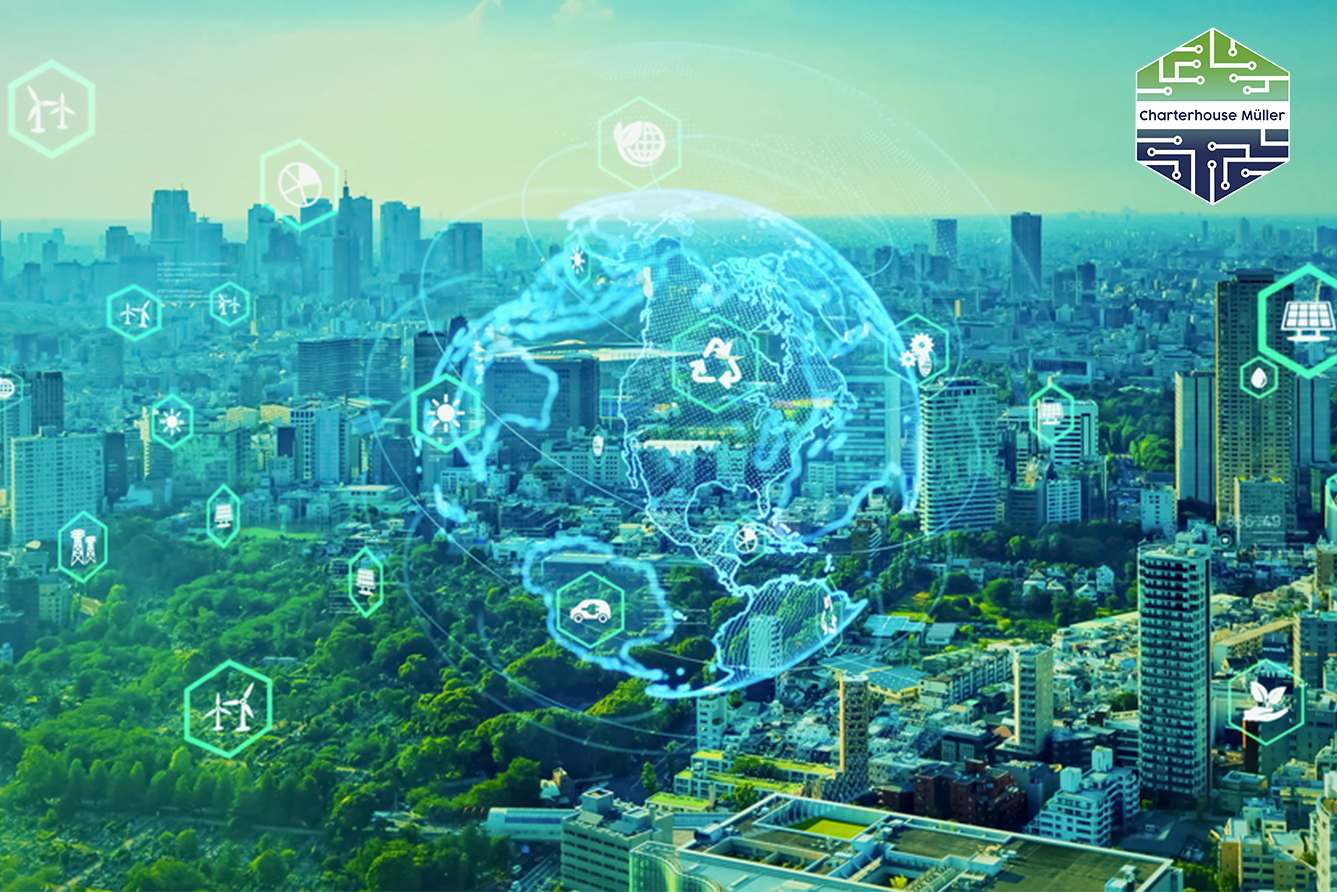
06 Feb IT in the circular economy: Redefining Sustainability in Technology
As the world grapples with the environmental challenges posed by technological advancements, the concept of the circular economy has gained prominence as a sustainable solution. In this paradigm shift, IT plays a pivotal role in reshaping the lifecycle of electronic devices and minimising the ecological footprint associated with technology.
Let’s delve into the intricate relationship between IT and the circular economy, exploring how innovative approaches are transforming the industry.
The Essence of the Circular Economy
Defining Circular Economy:
The circular economy is a departure from the traditional linear model of “take, make, dispose.” Instead, it promotes a cyclical approach, emphasising resource efficiency, product longevity and waste reduction. In this model, products and materials are reused, refurbished, remanufactured and recycled, fostering sustainability by minimising the depletion of natural resources.
The Role of IT in the Circular Economy
- Extending Product Lifecycles:
IT plays a crucial role in designing products with longevity in mind. Software updates, modular components and repairability are integral aspects that extend the lifespan of electronic devices. This not only reduces electronic waste but also contributes to resource conservation.
- E-Waste Management:
Electronic waste (e-waste) poses a significant environmental threat. IT solutions are emerging to address this challenge, including e-waste tracking systems, responsible recycling initiatives and programmes that incentivise the return of end-of-life devices. These efforts aim to divert e-waste from landfills and encourage responsible disposal.
- Device-as-a-Service (DaaS):
The circular economy encourages innovative business models like Device-as-a-Service, where organisations and institutions subscribe rather than owning it outright. This approach fosters a more sustainable consumption pattern, with manufacturers and partners retaining responsibility for the end-of-life management of their products.
- Remanufacturing and Refurbishment:
IT facilitates the refurbishment and remanufacturing of electronic devices, giving them a second life. This not only reduces the demand for new products but also lowers the overall environmental impact associated with manufacturing. Many IT companies are increasingly embracing remanufacturing practices, aligning with circular economy principles.
- Data-Driven Sustainability:
Utilising data analytics, AI, and IoT, IT can optimise resource use, energy consumption and production processes. These technologies enable businesses to make informed decisions that align with circular economy principles, leading to more efficient and sustainable operations.
Overcoming Challenges and Embracing Opportunities
While IT’s role in the circular economy is transformative, challenges persist. E-waste management, standardisation of recycling processes and ensuring ethical supply chains are areas that demand attention. However, these challenges also present opportunities for innovation and collaboration within the IT industry.
By fostering partnerships between partners that offer compliant and eco-friendly recycling facilities, businesses and institutions can create a holistic approach to circularity. Government regulations and industry standards can further incentivise sustainable practices, encouraging the adoption of circular economy principles across the technology landscape.
Conclusion
The circular economy represents a promising avenue for addressing the environmental impact of technology, the responsibility falls on the Board and IT to lead the charge in sustainable practices. Embracing circular economy principles not only reduces environmental harm but also paves the way for a more resilient and resource-efficient future, where technology becomes a force for positive change.
If you’re interested in learning more about how CHM can help you achieve a more sustainable friendly approach to your old IT equipment, please get in touch.

